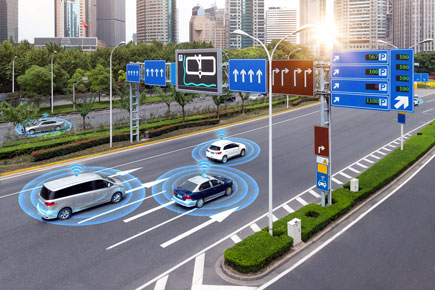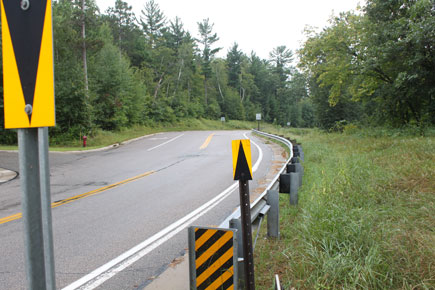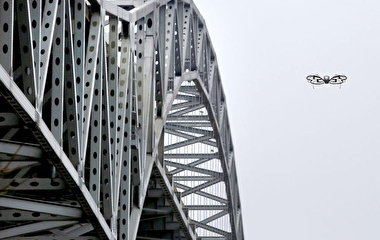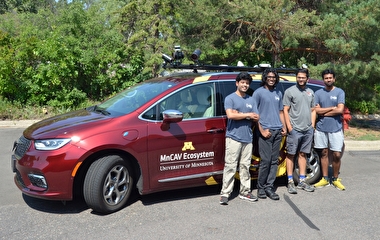Experts predict the implementation of connected and automated vehicles (CAVs) will soon be widespread, leaving local agencies in need of guidance to plan for CAV roadway needs. To help transportation agencies prepare for this change, U of M researchers have developed a reference tool and compiled a literature review that local agencies can use to anticipate the infrastructure needs for connected and automated vehicles and plan for infrastructure upgrades and maintenance activities.
“This resource identifies the features currently being installed in cars and recommends the steps local agencies must take to be fully compatible with this technology,” says Debra Heiser, engineering director for the City of St. Louis Park.
Connected vehicles communicate wirelessly with one another and with elements of the highway infrastructure, while automated vehicles assume some tasks traditionally performed by drivers. These technologies pose a challenge for road agencies, as they will require unique features from the highway infrastructure for navigation, sign reading, safety, and other functions. Transportation planners often anticipate decades of service from infrastructure such as traffic signal control technology and signage, so the decisions they make today must anticipate the needs of CAV technologies.
“For example, when spending $25,000 on a traffic signal controller and cabinet that is expected to provide 20 years or more of service, an agency will want to make sure it is anticipating future needs, including those presented by CAVs and vehicle-to-vehicle and vehicle-to-infrastructure communication platforms,” says John Hourdos, director of the U of M’s Minnesota Traffic Observatory.
To address this challenge, Hourdos’s team investigated the current state of CAV development and the expected technological platforms and needs these vehicles will require. The project was sponsored by the Minnesota Local Road Research Board.
Investigators began with an extensive literature review and then evaluated the technologies of currently available roadway infrastructure hardware. These findings were included in a survey of local agency infrastructure investment plans, turnaround plans for aging equipment, and priorities of potential CAV applications in their infrastructure. Finally, data on CAV systems and needs were compiled, and technologies that are currently used or close to implementation were identified.
Based on their findings, researchers developed recommendations for infrastructure planning and development and created a matrix of infrastructure applications to accompany the more detailed descriptions in the report; the matrix supplies the needs and cost projections for each application.
“Local engineers can use this reference to make better planning and procurement decisions for investing in new infrastructure and personnel and to inform constituents,” Hourdos says.
Local agencies are encouraged to focus on five key recommendations to best prepare for CAVs:
- Maintain road markings for visibility.
- Maintain clear road signage.
- Modernize signal controller systems.
- Develop and update communication infrastructure where possible.
- Follow guidance from the USDOT and state agencies where available.




